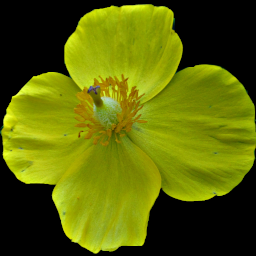Also called “Daisy Fleabane,” “Fleabane Daisy,” “Plains Fleabane,” “Prairie Fleabane,” and probably many other names. Pittsburghers usually call them “little daisies.” Old herbal legend has it that dried plants repel fleas. Fleabane is very common around here; if it were not, it would be treasured as a garden ornamental. It blooms for a good bit of the summer; these were blooming in late June in a clearing in the woods in Scott Township.
The seventh edition of Gray lists this as Erigeron ramosus, though the sixth had listed it as E. strigosus.
ERIGERON L. FLEABANE. Heads many-flowered, radiate, mostly flat or hemispherical; the narrow rays very numerous, pistillate. Involucral bracts narrow, equal, and little imbricated, never coriaceous, neither foliaceous nor green-tipped. Receptacle flat or convex, naked. Achenes flattened, usually pubescent and 2-nerved; pappus a single row of capillary bristles, with minuter ones intermixed, or with a distinct short outer pappus of little bristles or chaffy scales. Herbs, with entire or toothed and generally sessile leaves, and solitary or corymbed naked-pedunculate heads. Disk yellow; rays white, pink, or purple. (The ancient name presumably of a Senecio, from er, spring, and geron, an old man, suggested by the hoariness of some vernal species.)
E. ramosus (Walt.) BSP. (DAISY F.) Stem panicled-corymbose at the summit, roughish like the leaves with minute appressed hairs, or almost smooth; leaves entire or nearly so, the upper lanceolate, scattered, the lowest oblong or spatulate, tapering into a slender petiole; rays white, twice the length of the minutely hairy involucre. (E. strigosus Muhl.) Fields, etc., common. June-Oct. Stem smaller and more simple than the preceding [E. annuus], with smaller heads but longer rays. Var. DISCOIDEUS (Robbins) BSP., with the rays minute, scarcely exceeding the involucre, occurs in s. N. E. and N. Y.







